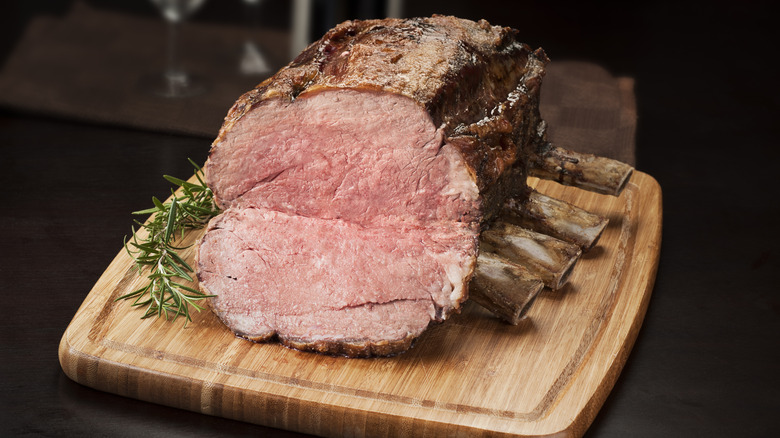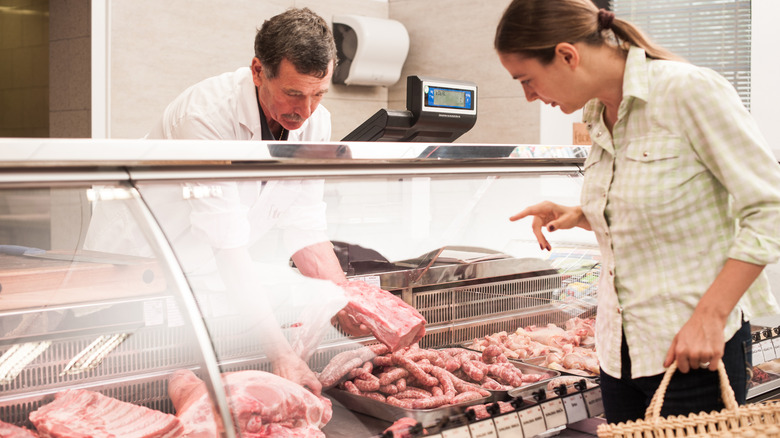What To Do If Your Prime Rib's Grade Isn't Labeled On The Package
Known for its rich flavor and succulent texture, homemade prime rib makes for a hearty, satisfying meal that's often more expensive than other cuts of beef. Consequently, you want to rest assured the slab you're preparing lives up to its lofty reputation. One way to do this is by checking the grade on the label. The USDA designates different grades of beef, and the meat used to make prime rib typically comes in prime or choice. Prime is the best option when it comes to optimal juiciness and flavor, but meat isn't always labeled with the grade.
In this case, you should confirm the grade with the person or staff of the company selling you the meat. If the beef is not labeled and there's no one to help you, there are certain qualities you can look for. Remember that the USDA describes the fat marbling in prime grade beef as "slightly abundant to abundant." It will have ample white lines — meaning fat — distributed throughout the muscle tissue. This is what makes prime rib such a desirable dish, so keep an eye out for these intramuscular streaks.
Texture is another characteristic to consider, as quality beef cuts are typically soft, tender, and firm. The color is also important, as beef appears dark after it's cut and gradually becomes the red shade that people associate with raw meat. Watch out for slabs that are brown or gray, as these colors suggest extended oxygen exposure. When you know how to identify the best possible cut, you can rest assured that your classic prime rib recipe hits all the right notes. Another shopping tip to remember when buying prime rib is to inquire about age, as wet-aged beef usually offers the best texture and taste.
Why is prime beef often the best choice?
The USDA categorizes beef in three separate grades: prime, choice, and select (select is not recommended for prime rib since it's very lean and offers the least amount of intramuscular fat). As mentioned, prime cuts are brimming with fatty goodness because of the delicious marbling, making them excellent for roasts. As you cook well-marbled beef, the fat breaks down and disperses into the meat. Cuts with less marbling just can't replicate the juiciness of prime grades.
Choice cuts can be used for roasting, but you're not going to achieve the same tenderness unless you take some extra steps. One is dry-brining, which entails rubbing the beef with salt to soften tough muscle fibers after a few hours. You can dry-brine prime rib (kosher salt is the best type for dry-brining), but it might not be necessary if you select prime grade beef.

